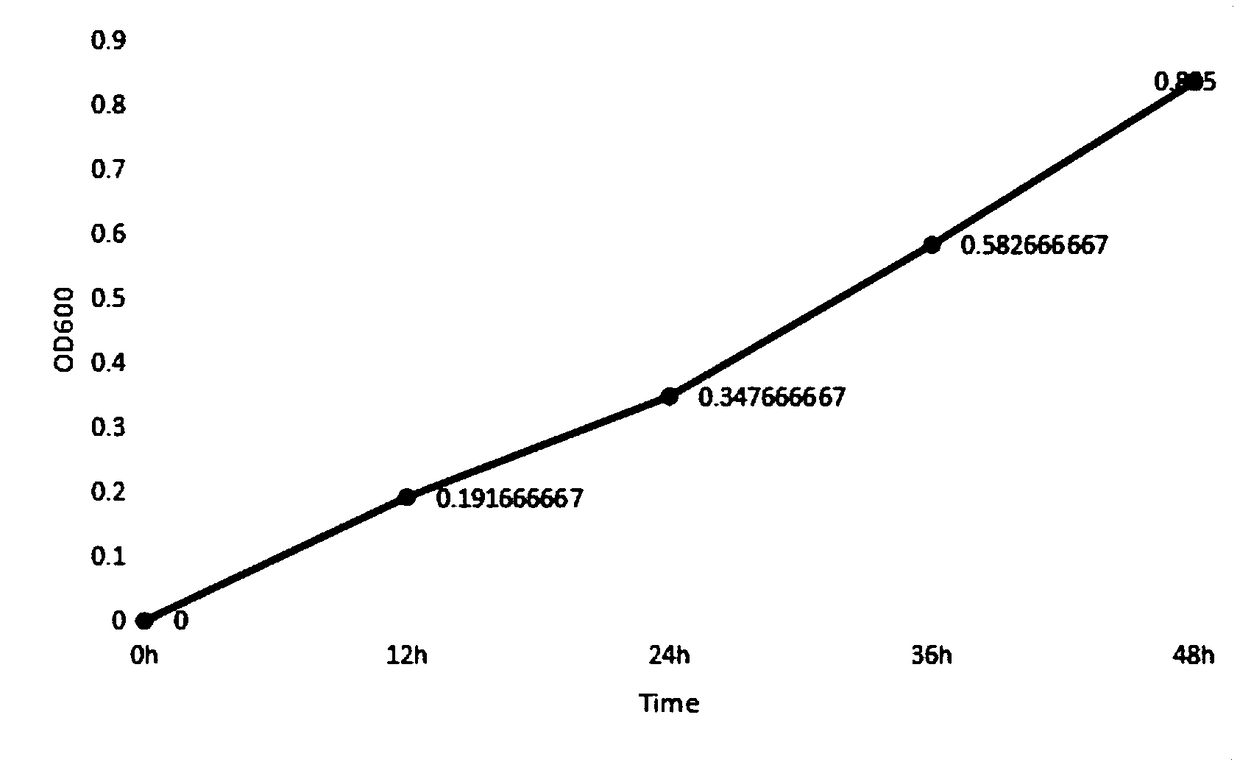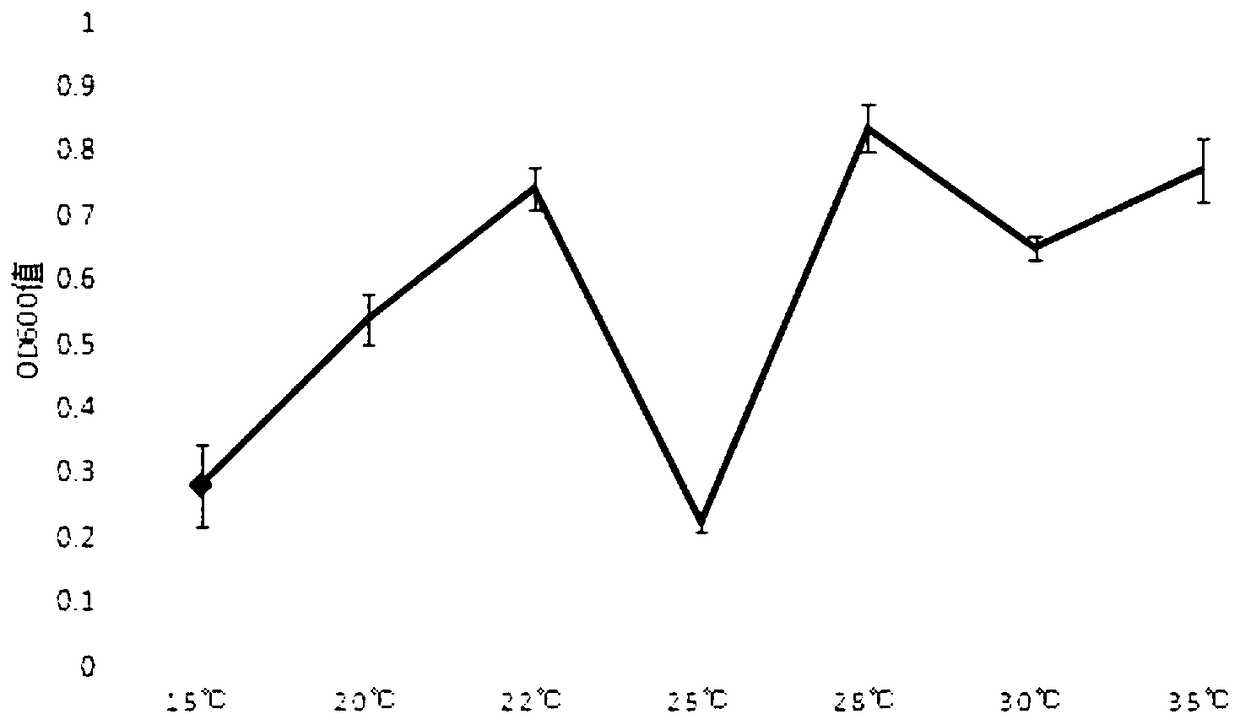Method for cultivating aspergillus versicolor HY12 strains
A technology of Aspergillus versicolor and its cultivation method, applied in the biological field, can solve the problems of loss of commodity value, harm, production damage, etc., and achieve the effects of high teratogenicity rate and lethality rate, and fast growth and reproduction speed
- Summary
- Abstract
- Description
- Claims
- Application Information
AI Technical Summary
Problems solved by technology
Method used
Image
Examples
Embodiment 1
[0033] Screening of Aspergillus versicolor HY12 strain
[0034] 47 soil samples were collected from the Spodoptera litura infested areas in southern Hunan tobacco fields, including 25 soil samples in Jianghua, Yongzhou, 16 soil samples in Hengyang, 4 soil samples in Jiangyong, and 2 soil samples in Ningyuan. Among them, the 5-point sampling method is used to collect soil samples, and the center distance between the two tobacco plants is selected as the soil sampling point, and the soil samples with a length of 10 cm, a width of 10 cm, and a depth of 5 cm are cut down with a soil shovel and put into a sterile self-sealing plastic bag. Take it back to the laboratory and store it in the refrigerator for separation. The time, location and related information of sample collection shall be recorded in detail, and different soil samples shall be marked separately.
[0035] The retrieved tobacco field soil samples were crushed under aseptic conditions and fully mixed, then fully mixe...
Embodiment 2
[0054] Cultivation of Aspergillus versicolor HY12 strain
[0055] The Aspergillus versicolor HY12 strain obtained in Example 1 was identified, and the Aspergillus versicolor HY12 had a high similarity with multiple strains of Aspergillus, and the similarity coefficient with Aspergillus versicolor reached 99%. According to the rDNA ITS sequence, combined with its morphology The strain HY12 was identified as Aspergillus versicolor, wherein the rDNA ITS segment size of Aspergillus versicolor was about 500bp; SEQ ID NO.1.
[0056] The Aspergillus versicolor HY12 strain was cultured on a fungal medium (4 parts of glucose, 1 part of peptone, 1 part of yeast extract powder, 2 parts of agar, 0.2 part of gentamicin, 100 parts of water) until sufficient sporulation, and picked Conidia powder, utilize 0.05% Tween80 solution to prepare concentration and be 10 8 spore suspension per mL; inoculate 10ml of spore suspension into 1L fermentation medium (glucose 40g, peptone 10g, yeast extract...
Embodiment 3
[0058] In the present embodiment, the cultivation temperature of Aspergillus versicolor HY12 strain in the fermentation medium is 15, 20, 22, 25, 28, 30 and 35 respectively, and the OD is measured with a spectrophotometer 600nm value and record the results, each group was repeated 3 times, and the thalline growth in each fermentation medium was counted to reach the maximum value, and other technical characteristics were the same as in Example 2. The result is as figure 2 shown by figure 2 It can be seen that the temperature of the fermentation medium is the maximum at 28 ° C, OD 600nm was 0.833; when the temperature was higher than 30℃, the growth of Aspergillus versicolor HY12 strain was significantly inhibited.
PUM
 Login to View More
Login to View More Abstract
Description
Claims
Application Information
 Login to View More
Login to View More - R&D Engineer
- R&D Manager
- IP Professional
- Industry Leading Data Capabilities
- Powerful AI technology
- Patent DNA Extraction
Browse by: Latest US Patents, China's latest patents, Technical Efficacy Thesaurus, Application Domain, Technology Topic, Popular Technical Reports.
© 2024 PatSnap. All rights reserved.Legal|Privacy policy|Modern Slavery Act Transparency Statement|Sitemap|About US| Contact US: help@patsnap.com










